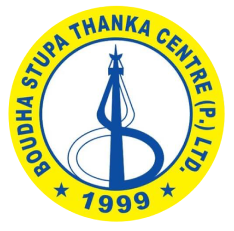
School of Thanka Painting
Boudha Stupa Thanka Center has been running the thanka art school since 2000 A.D with the aim of preserving and contuining the tradition of the painting Thankas for generations and systematically developing the culture of art. Our one of the senior artists Purna Lama has been teaching and guiding the thanka art painting to those who enrolls in our art school. Currently our art school provides classes to foreigners only and once you enroll you can learn for as many days as you like since we charge according to days not hourly.
Training and Schooling
It has been actively conducting various seasonal training and regular teachings to artists ranging from beginners to skilled Thanka painters. Beside interested, we select a limited number of people from the remote areas of the Tamang community and provide them with regular courses in painting thankas. There are fifty regular students including the scholarship holders.
Methods of Thanka Painting
There are normally five steps involved in making the thanka painting.
CANVAS PREPARATION: Firstly, cotton cloth is attached to a wooden frame using nylon string. A typical kind of glue is mixed with water and boiled. Then it is mingled with white clay and the mixture is pasted all over the cotton cloth. It is then allowed to dry for an hour. After that, it is placed over a wooden frame and rubbed gently with a soft stone. This process is repeated four to five times until a smooth surface is achieved.
SKETCHING: In this process, the master sketches the figures of deities under the ideas of the religious books using a pencil and compass.
COLORATION /COLOR MATCH: Different types of color are mixed together along with glue so that a required color is gained. Then, the canvas is colored using the process of shading (matching the color with the technique of dots).
LINE SHAPING AND ORNAMENTATION: This process includes making lines, curves, and circles in the required area of the canvas using a sharp brush. Then, ornament(gold and silver) is coated on them to give the sparking image to the thanka.
FINISHING: Finally, the deities' faces are sketched in the end giving a final touch to the art.



